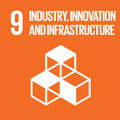- Docente: Luca Mantecchini
- Credits: 6
- SSD: ICAR/05
- Language: Italian
- Moduli: Luca Mantecchini (Modulo 1) Filippo Paganelli (Modulo 2)
- Teaching Mode: In-person learning (entirely or partially) (Modulo 1); In-person learning (entirely or partially) (Modulo 2)
- Campus: Bologna
- Corso: Second cycle degree programme (LM) in Civil Engineering (cod. 0930)
Learning outcomes
The course deals will the analysis of air transport systems and their performances due to the interactions among the several transport elements. Transport systems are the results of the interactions among several elements that affect one another in both direct and indirect ways. The course wants to provide students with basic skills and competencies for the functional design of the components of an air transport system - by modelling transport supply and demand - and for the assessment of its impacts and performances.
Course contents
The air transport system: The main actors and coordination; Regulator and Service Provider; international bodies (ICAO, ECAC, EUROCONTROL, FAA, IATA, ACI).
The airport node: classification; location and accessibility; catchment area; relevant factors for passengers and airlines; multi airport systems
Main elements of the land side: layout; air transport general cost for passengers; service level, dwell time and slack time; monetary costs
Main elements of the air side: runways, taxiways and aprons; airport capacity; estimation of runway capacity; ROTA and ROTD concepts; relevant factors contributing to runway capacity; control systems and separation between aircraft; generalized costs for airlines; block time
Air Service Networks: Hub-and-spoke and point-to-point models; Air Traffic Management System (ATM); Air Navigation Service Provider (ANSP); Air Traffic Control (ATC); airways and separations between aircraft
Air transport demand: general characteristics - Levels of demand; time series models; estimation of demand for different features (air mode, company, airport); Competition/integration between air and high-speed train – main elements of the "high-speed train" system
Performances of the airport node: Operational, economic, environmental performances; impacts
Readings/Bibliography
Main references / Tesi consigliati:
Postorino M. N., ed., Button K., Chang Yu-chun, Collins A., Hensher D., Hess S., Kroes E., Zheng Li, Postorino M. N., Development of regional airports, WIT Press (GBR), 2010.
De Neufville R., Odoni A. (2003). “Airport systems. Planning, design and management”, McGraw-Hill.
Postorino M.N. (2009).“Introduzione alla pianificazione del sistema di trasporto aereo”, FrancoAngeli.
Di Gangi M., Postorino M.N. (2005). "Modelli e procedure per l'analisi dei sistemi di trasporto : esercizi ed applicazioni", FrancoAngeli.
Teaching methods
Lectures and Practical / Workshops
Assessment methods
Written test made by theoretical and practical questions. Questions will concern the course contents, as described in the detailed program. The goal of the written test is to evaluate students’ knowledge and their ability to apply such knowledge in a working environment by using a system approach able to link the functional design of a single transport element to the transport network analysis and the produced effects.
Teaching tools
-
Office hours
See the website of Luca Mantecchini
See the website of Filippo Paganelli
SDGs



This teaching activity contributes to the achievement of the Sustainable Development Goals of the UN 2030 Agenda.
